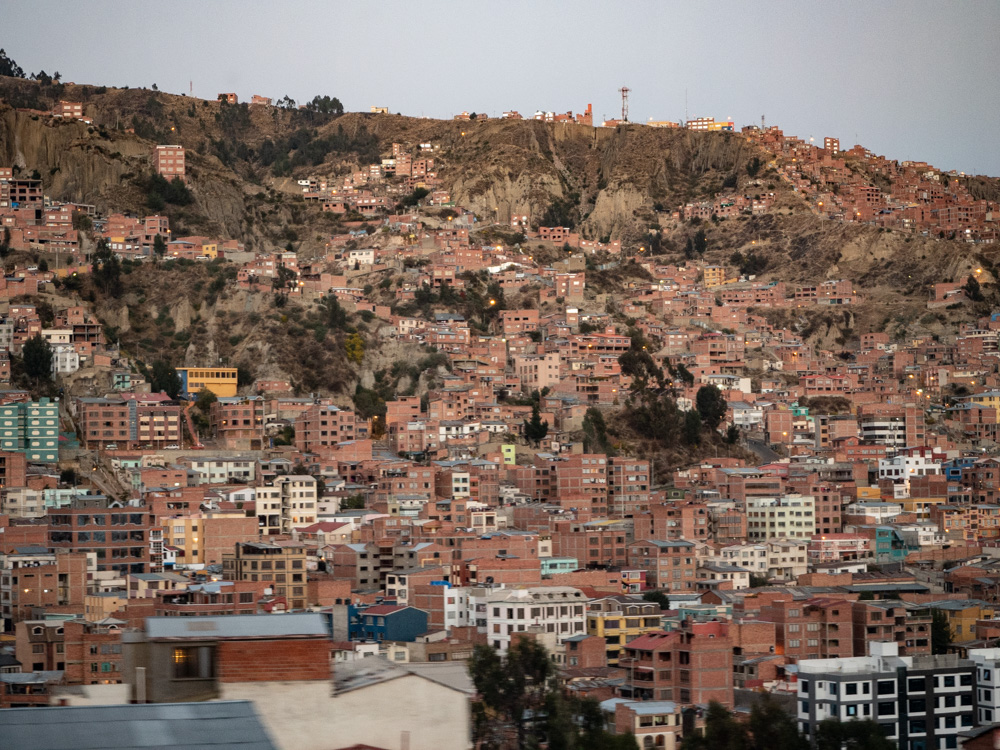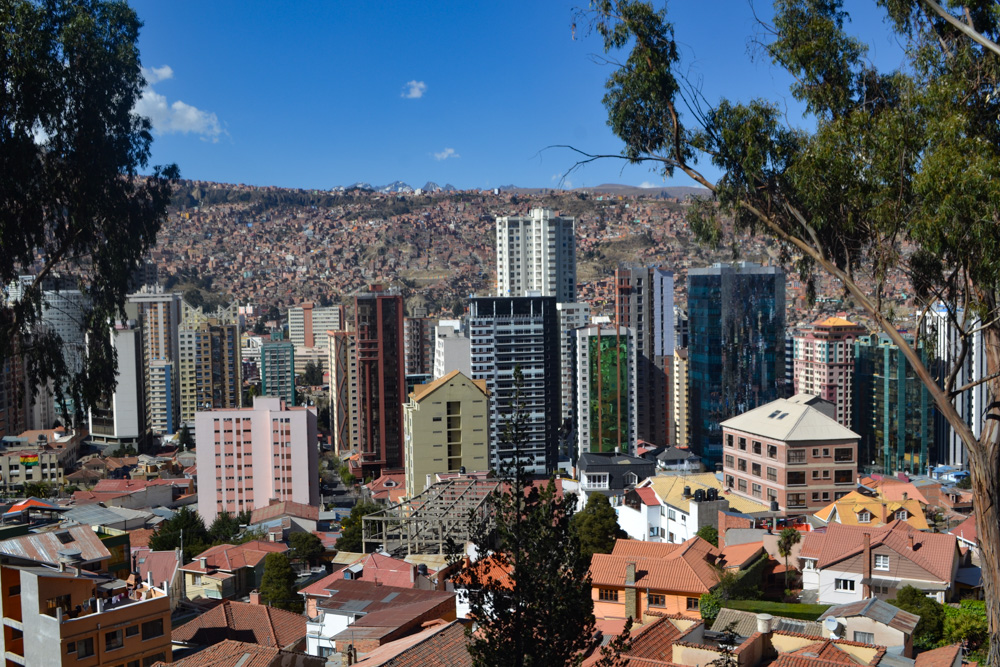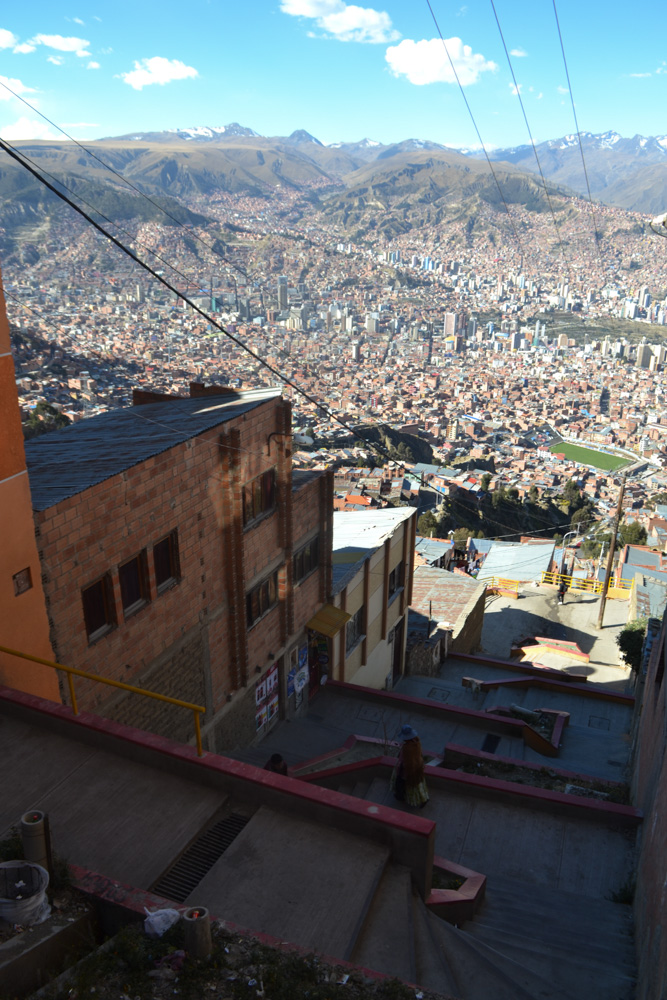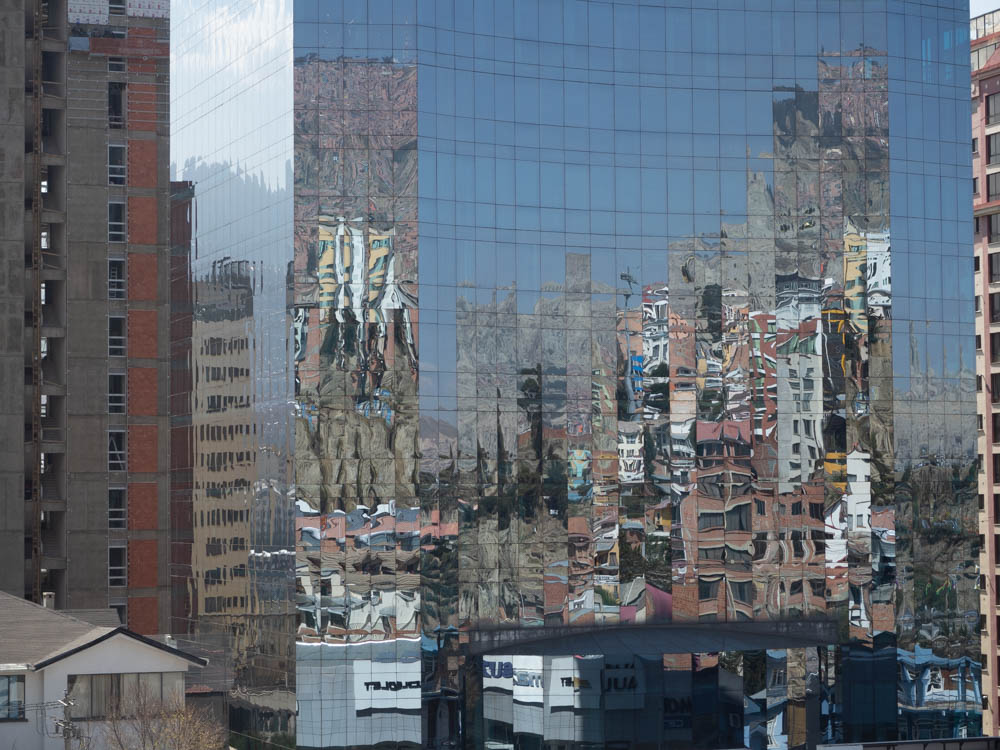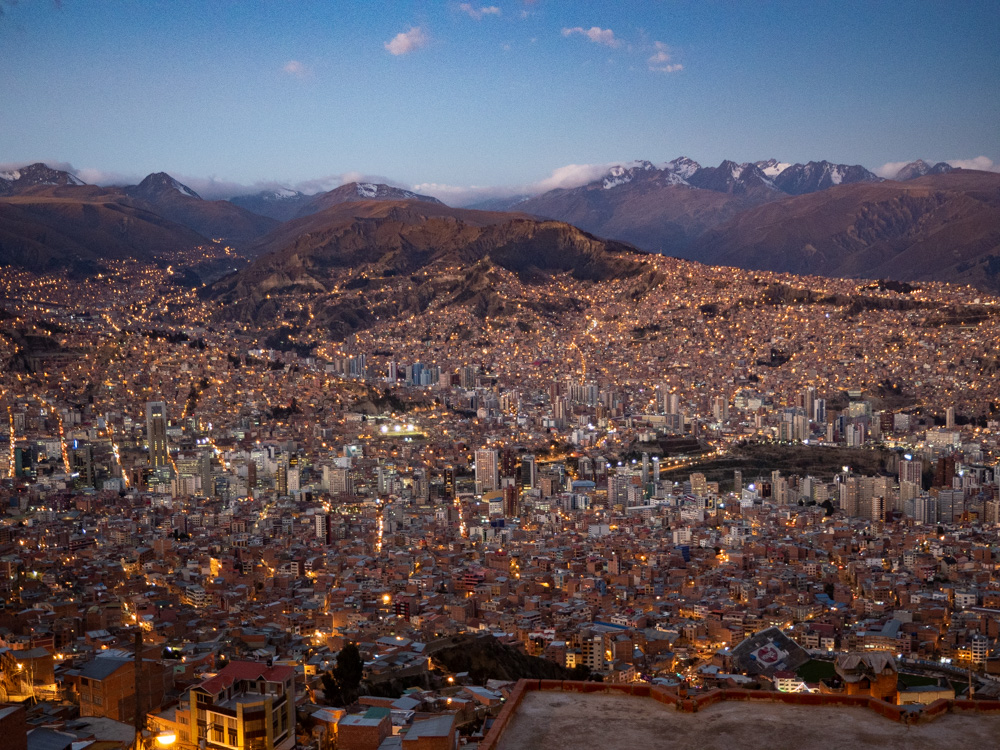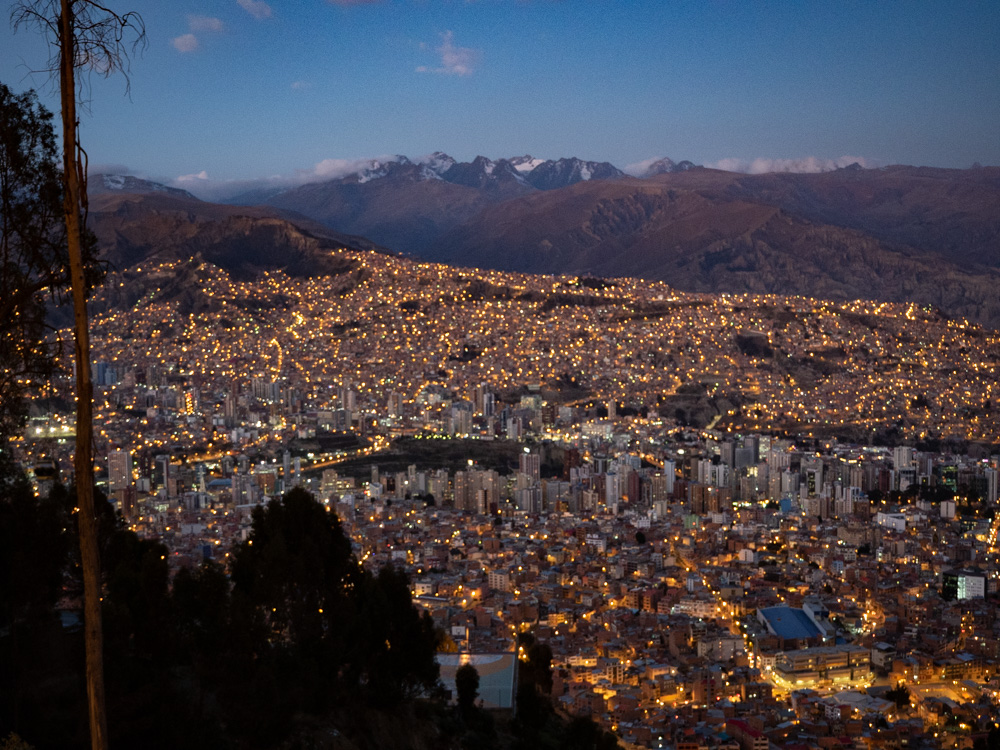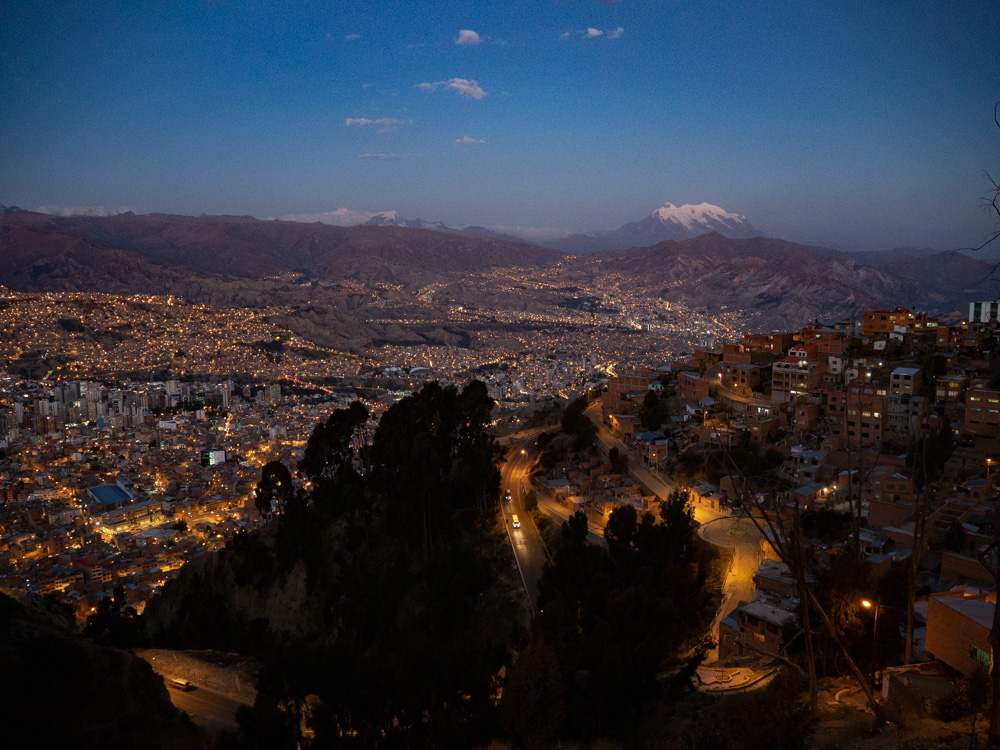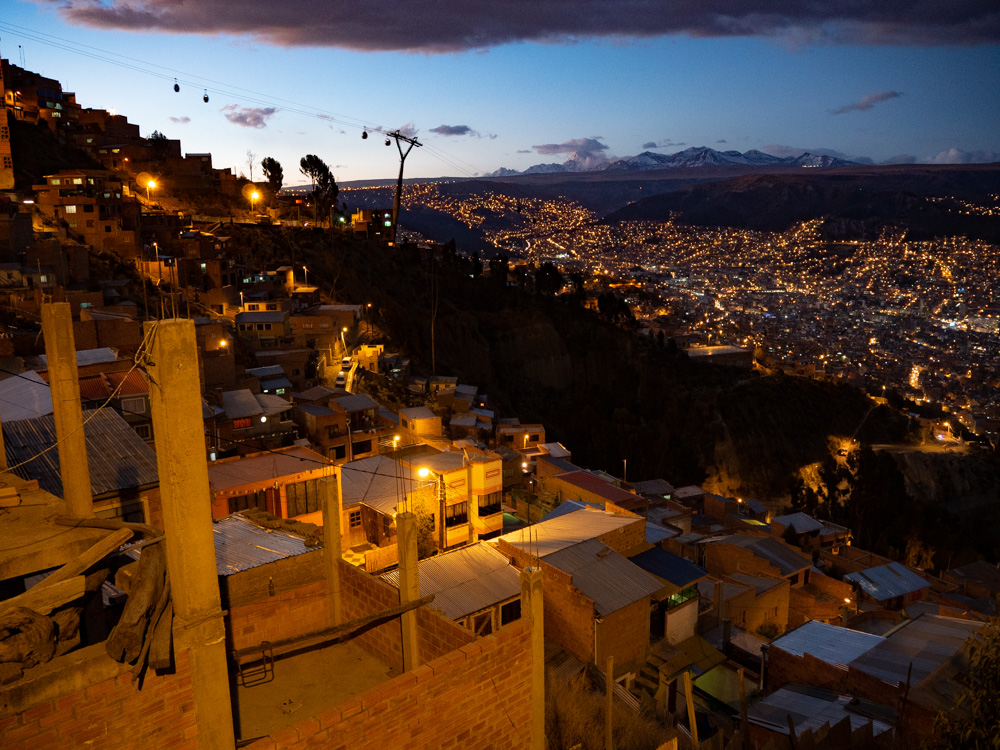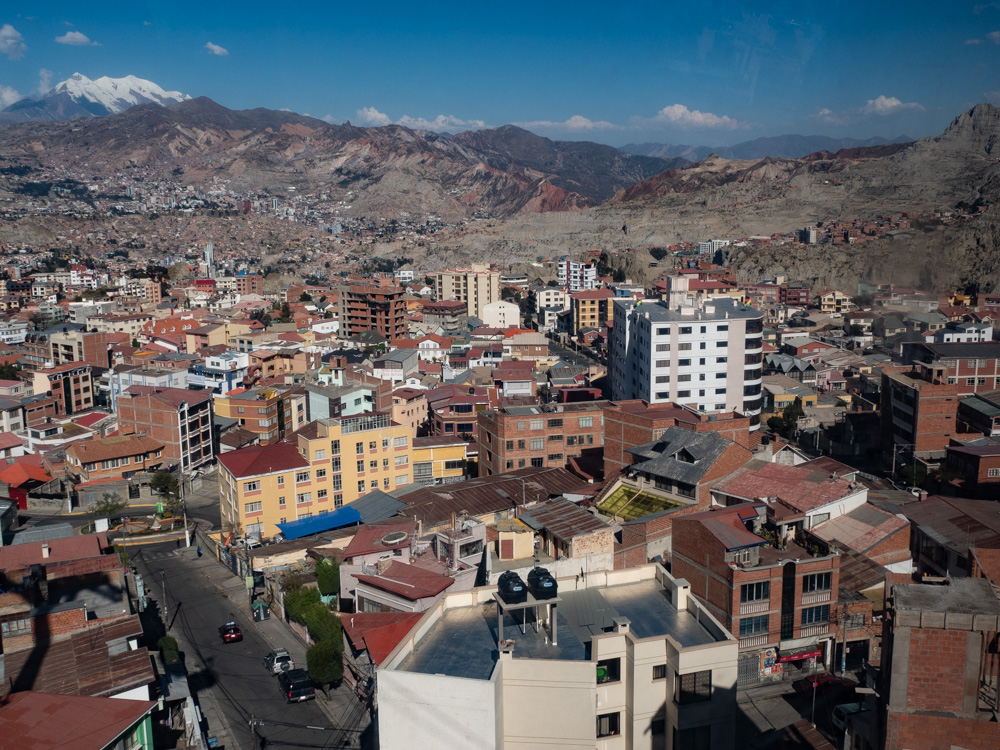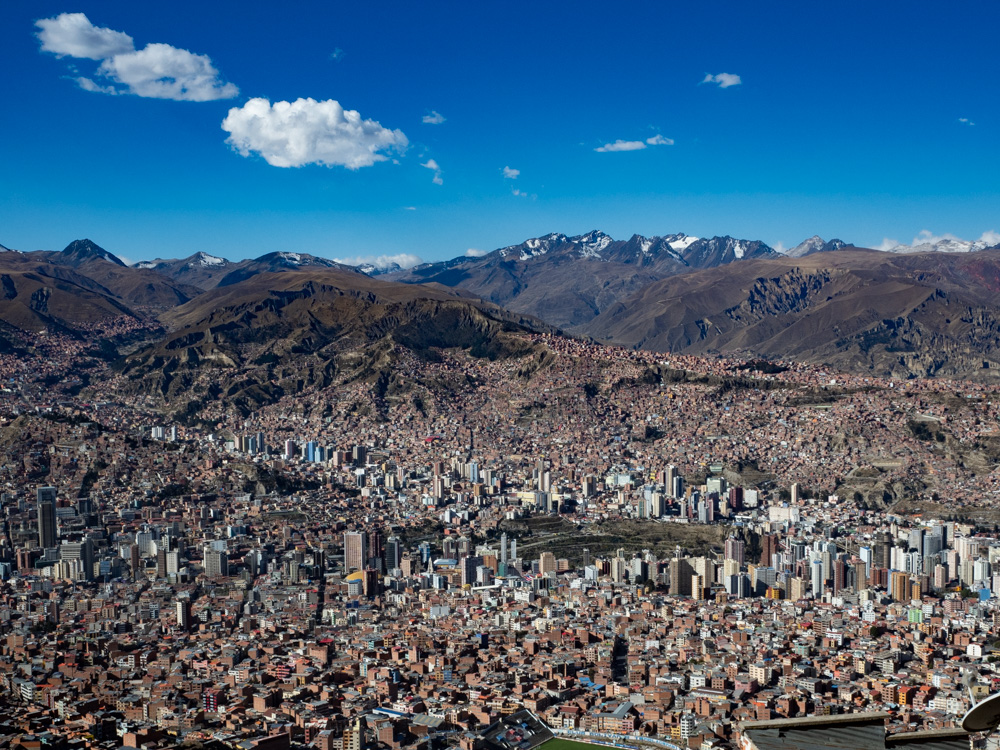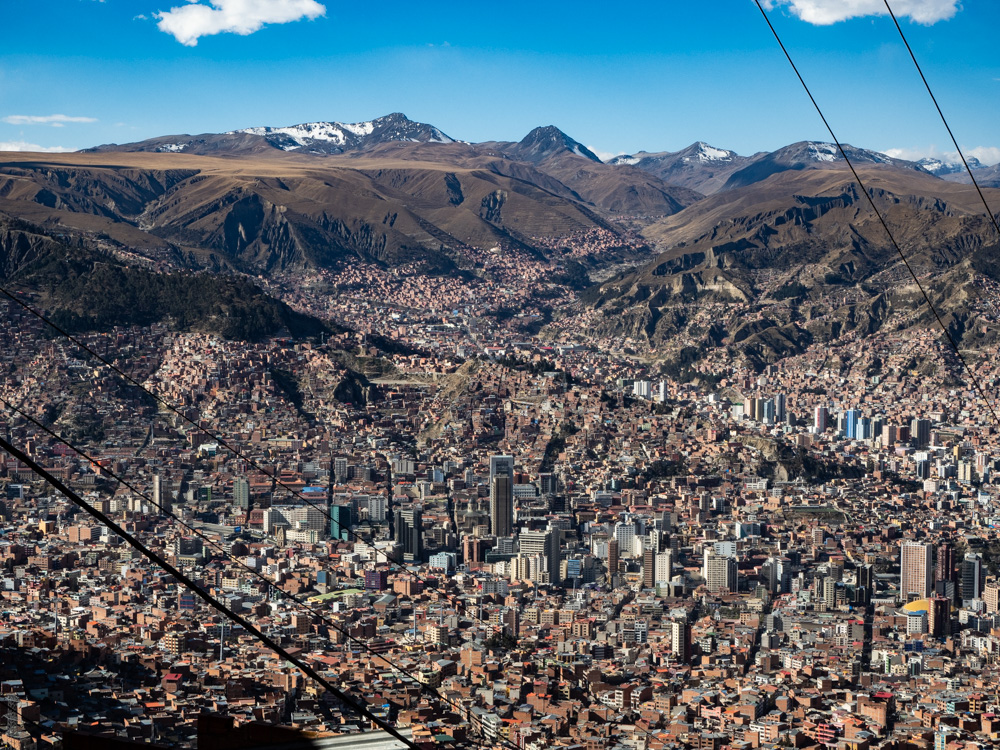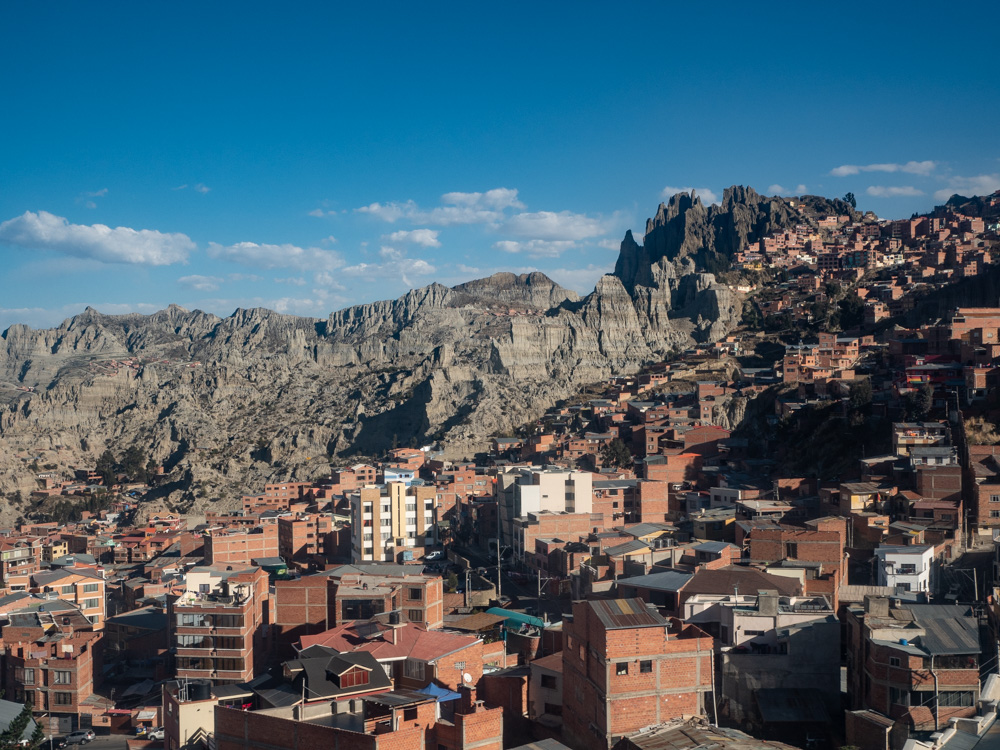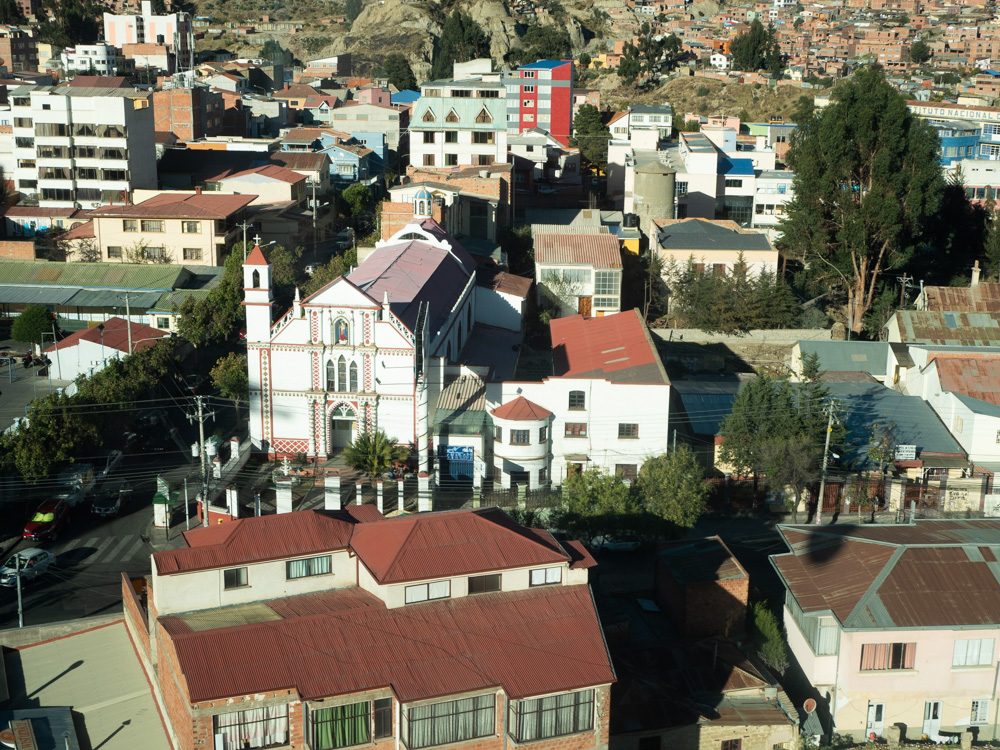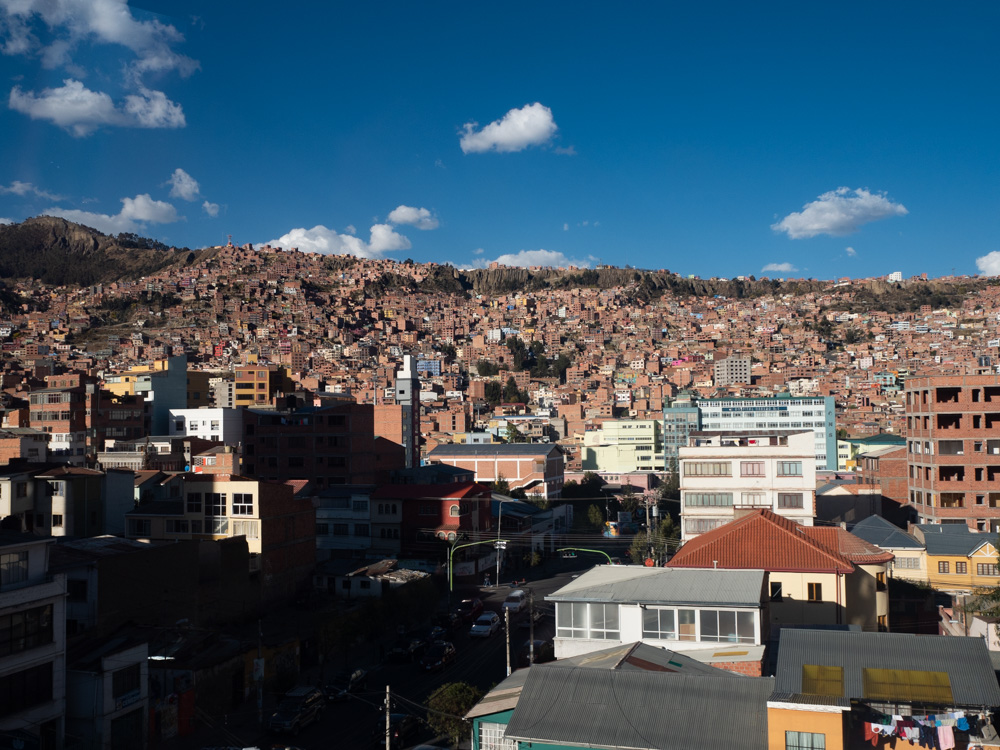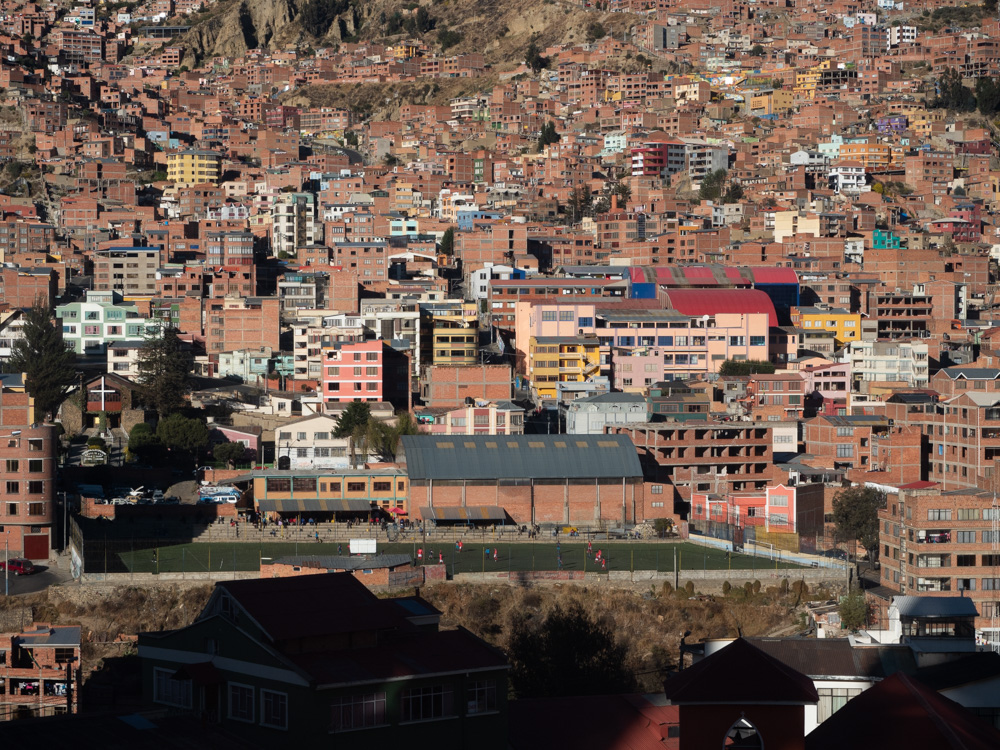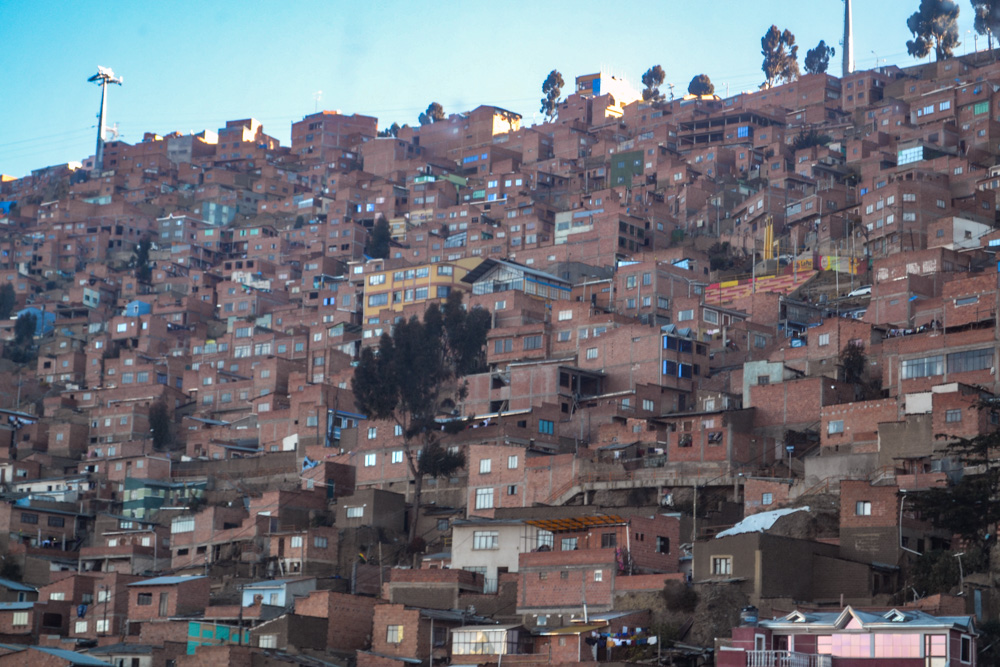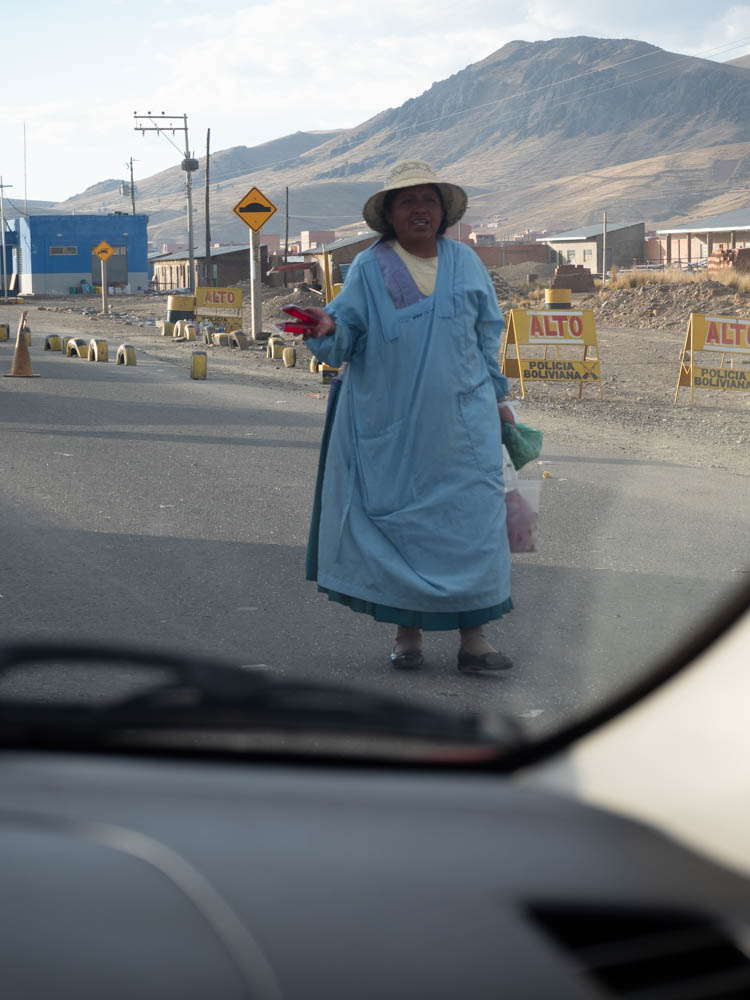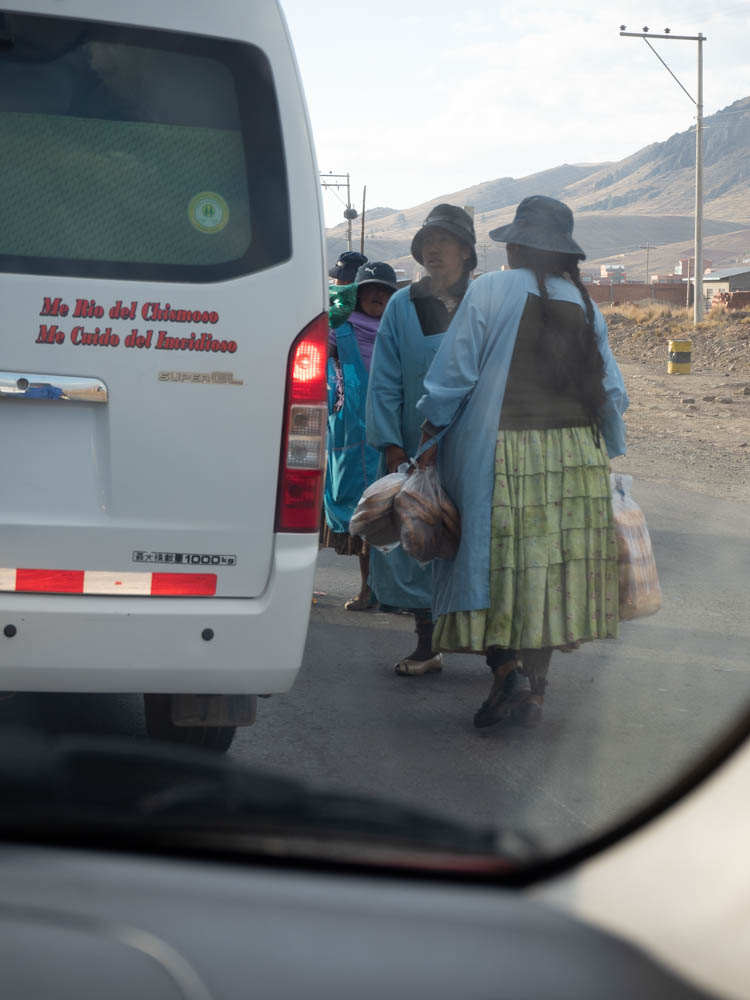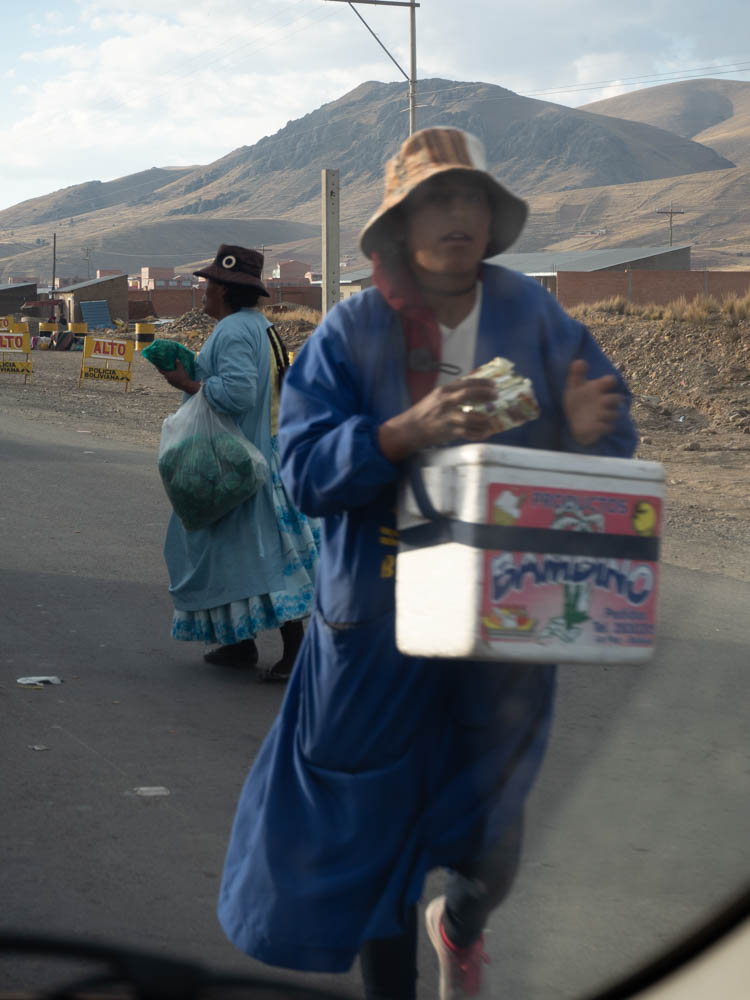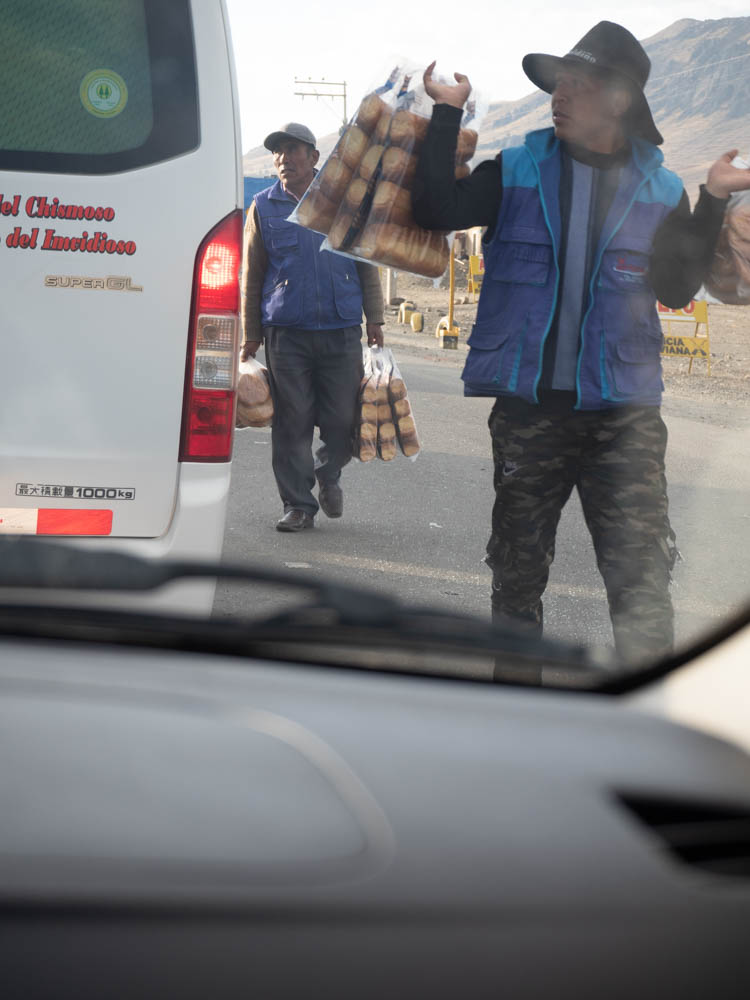This officially starts the part of our journey where I truly believe it’s not possible to capture the beauty with a camera or in words. It is necessary to see some of the sites in person, but I will do my best.
After picking up the rental car, we were on our way to Copacabana, Bolivia which is located on the south shore of Lake Titicaca. The drive to Copacabana took us through the capital of Bolivia, La Paz. I couldn’t believe my eyes. The sight of La Paz is stunning. The city is situated in a valley high up in the Andes Mountains. Not only does the city sit in the valley, but they have taken advantage of every possible inch of mountainside as well. The city rises up from the ground in a way that defies comprehension. At first glance it almost appeared as if buildings were floating in the air. The sight literally took my break away and created a pure sense of amazement. I’m not often shocked, but the first view of central La Paz most certainly earned my attention.
La Paz claims to be the highest capital in the world at an altitude of 11,942 feet, but that is a bit of a stretch. The actual capital of Bolivia is the lower altitude Sucre, but La Paz is the seat of government for Bolivia. Not at all confusing.
Driving in La Paz involves steep hills, and in some areas lots of traffic. In the busier areas lanes are optional, if they exist at all. There were situations where we had four lanes of traffic driving on three lanes of road, every driver playing chicken to move into a different lane. Add in vendors standing in the middle of the road selling their goods, pedestrians trying to cut across wherever they can, and cross streets where the only possible way to cross is to force your car out into traffic. It felt very much like a video game. Check it out in the pics and videos below.
Once we were out of La Paz, the drive towards Copacabana was beautiful. Mountains everywhere we looked and incredible lakes that pop up out of nowhere. One thing we noticed along the way is the architecture does not vary much from place to place. I don’t know why for sure, but would speculate it’s more about economics than anything else.
On the road to Copacabana it is necessary to cross a small river, but there is no bridge. People and vehicles take a ferry across the river, but these ferries are not like any I have ever seen before. The pictures, from both the trip in and out, will give you a sense of what I mean.
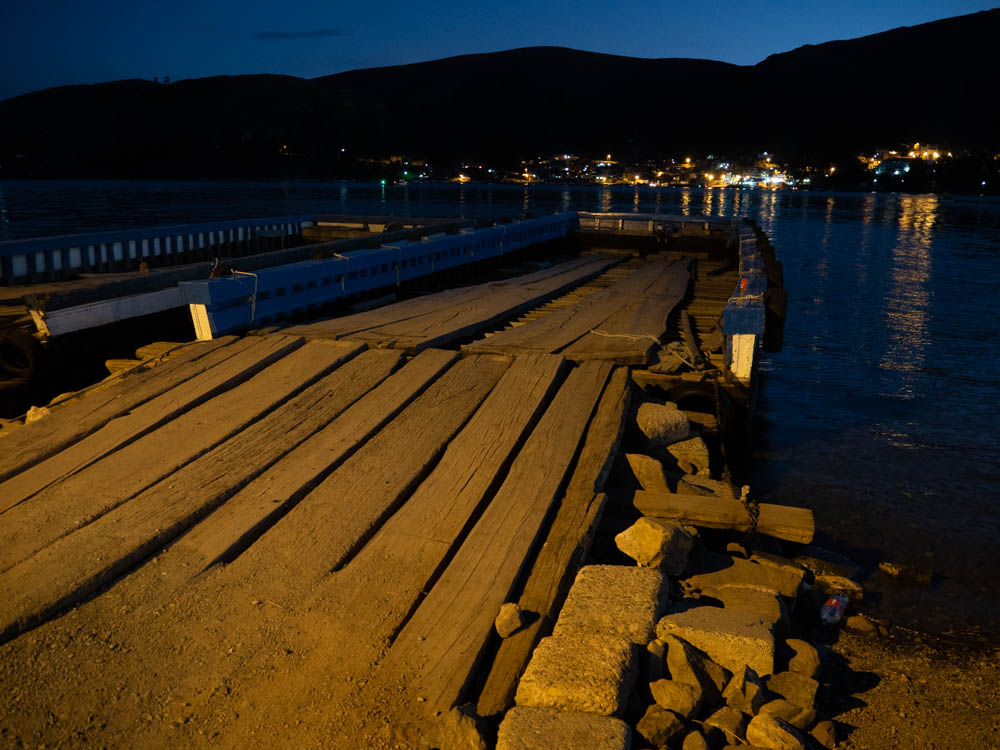
Our first ride on the ferry was at night 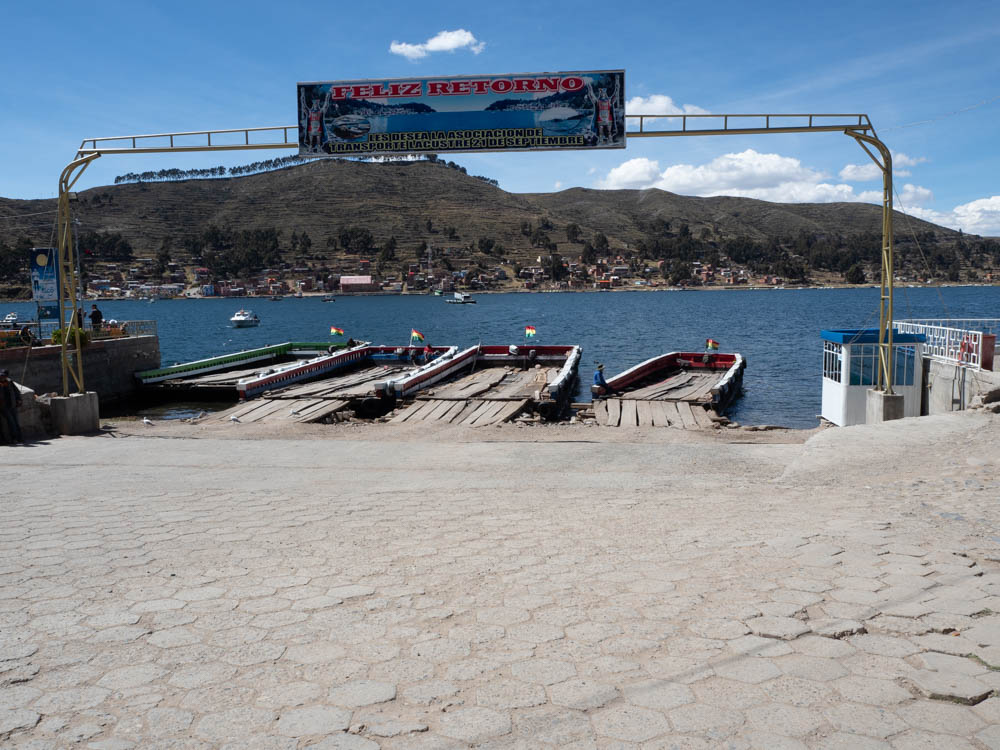
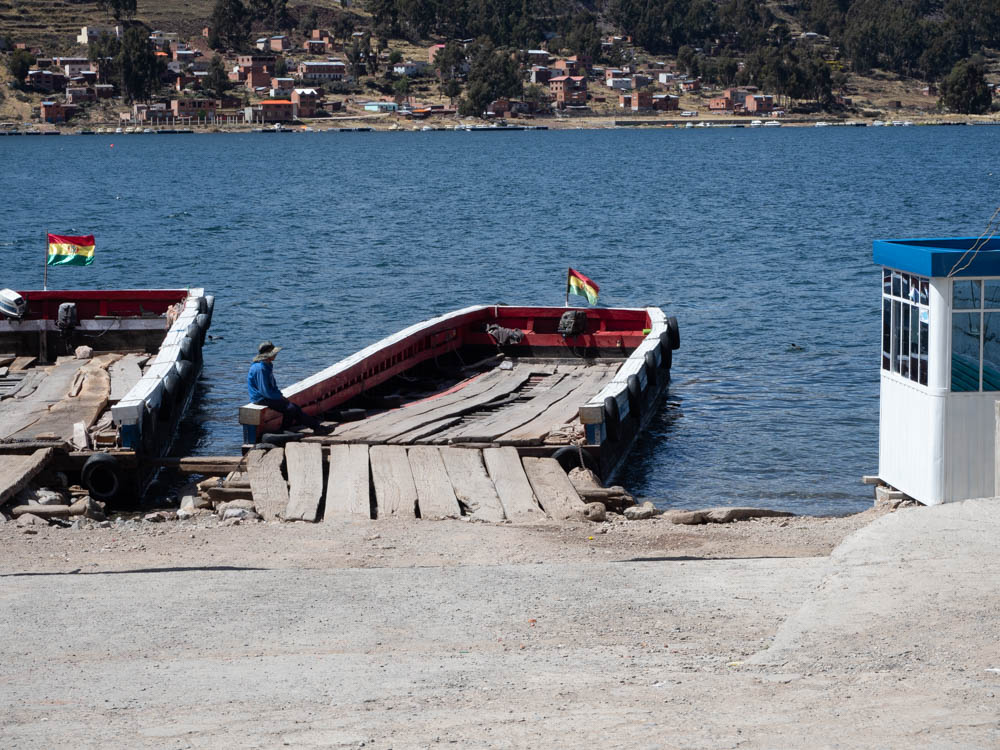
Ferry in daylight 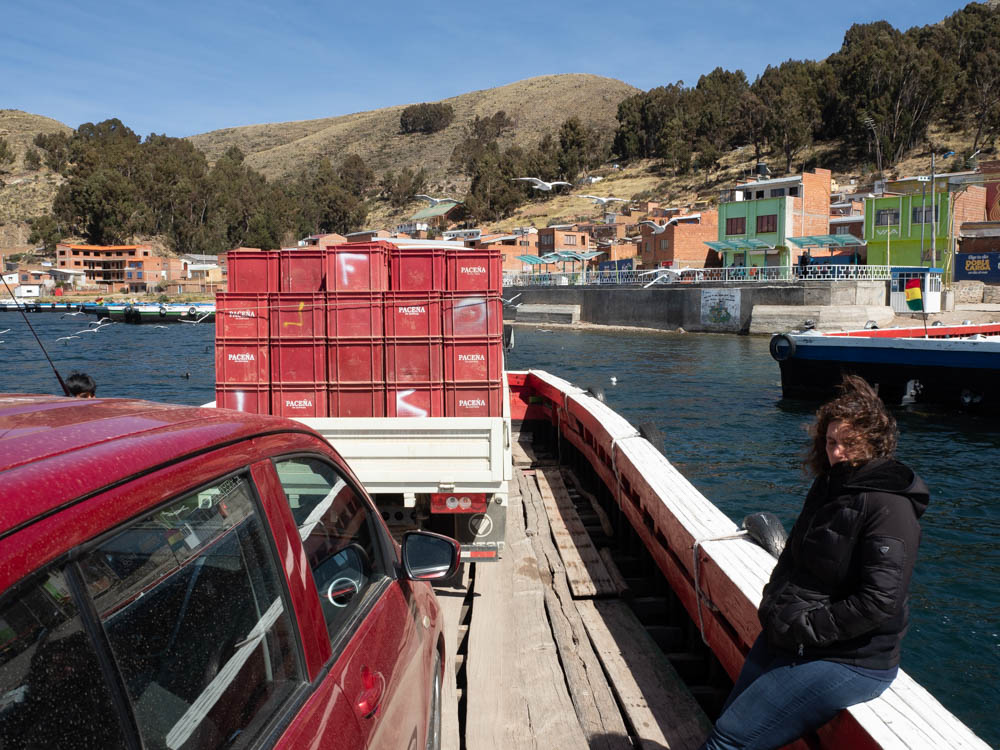
The ferry can carry two vehicles 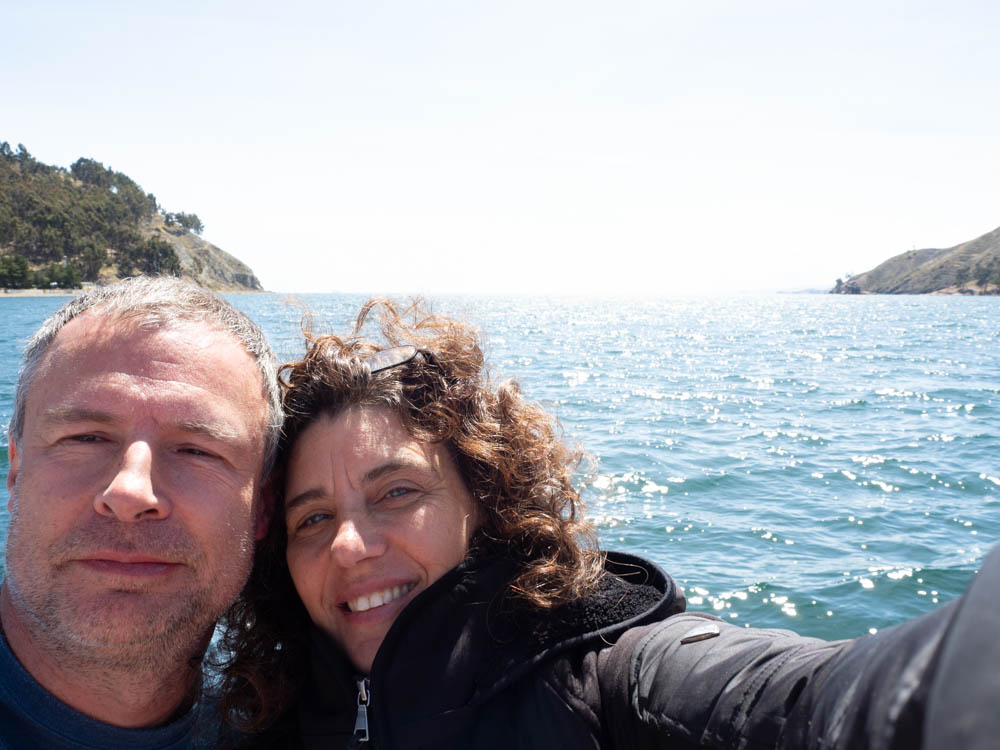
One last picture in case we sink… 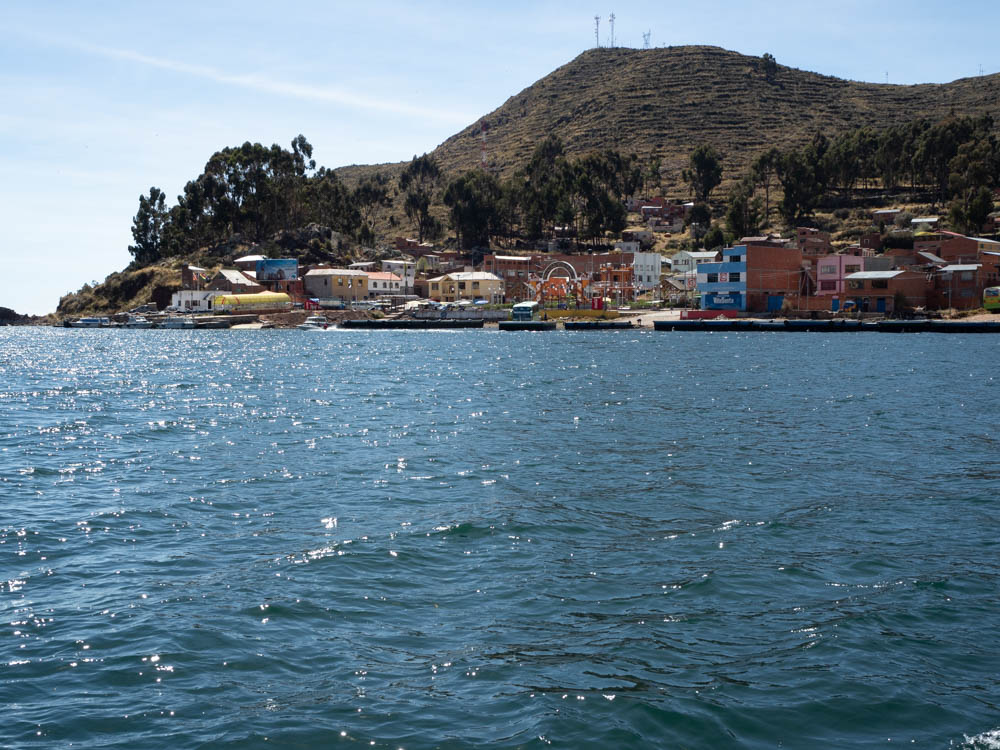
Tiquina, Bolivia
We learned after the first crossing that 50 vehicles per year are lost in the river due to ferry incidents. The ferries can start to rock back and forth with the right combination of waves and tall vehicles, and some just sink on their own (we watched the ferry operators bailing water out of more than one ferry). In the video below you can see a man standing up on the edge of the boat trying to stop his truck from rocking.
We survived the river crossing and continued our journey toward Copacabana. It was dark by this point and the road was narrow and winding. To complicate matters we started coming across various obstacles in the road. The first obstacle was a collection of large rocks scattered across the road. We didn’t think much of it as falling rock is common in this area. Next we ran into a more organized pile of rocks that did not appear to be natural in form. Very odd. As we continued to drive we ran into multiple such roadblocks, including a large mound of dirt that extended across the road. By this point it was clear the roadblocks were man made. Fortunately, larger vehicles had created small paths through some of the more complete roadblocks. When we reached the final roadblock there was a large piece of construction equipment clearing the road.
We later learned there is a group of protesters in Copacabana that will create mischief on occasion to bring attention to the lack of a bridge over the river we had just crossed by ferry. The word is this latest protest had pushed a bridge deal forward, but the protestors were standing at the ready if the deal fell through. As we drove back out of Copacabana a few days later we could see signs of a new protest brewing, including small groups of people just sitting by the side of the road suspiciously close to piles of rocks.
We eventually made it to the hostel, checked in, and tracked down a late dinner. Our accommodations did not quite work out as planned. More in the next post.
Will

